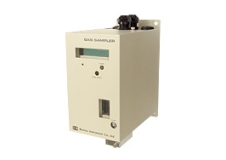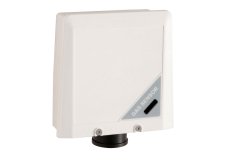Hydrogen Sulphide Detection
Hydrogen sulphide is the chemical compound with the formula H2S. Hydrogen Sulphide is a gas commonly found during the drilling and production of crude oil and natural gas, plus in wastewater treatment and utility facilities and sewers. The gas is generated as a result of the microbial breakdown of organic materials in the absence of oxygen. Colourless, flammable, highly toxic and corrosive, H2S gas is noticeable by its rotten egg smell.
Hydrogen sulphide usually breaks down in the air and therefore exposure is only likely to continue if there is an ongoing source. People usually can smell hydrogen sulphide even at very low concentrations in the air, ranging from 0.0005 to 0.3 parts per million (ppm).
Hazards and protection
Exposure to low concentrations of hydrogen sulphide may cause irritation to the eyes, nose, or throat. It may also cause difficulty in breathing for some people with asthma. Low concentrations of hydrogen sulphide may cause headaches, poor memory, tiredness, and balance problems. Hydrogen sulphide numbs olfactory nerves starting with a concentration of about 100 ppm. People are no longer able to smell this gas at these concentrations. Brief exposures to high concentrations of hydrogen sulphide (greater than 1000 ppm) can cause a loss of consciousness and death.
Hydrogen sulphide is one of the most dangerous gases found in the oil & gas industry. Even today, there are regular occurrences of injuries and deaths due to H2S exposure. Current detection equipment for hydrogen sulphide generally has a detection limit of 10 ppm, which is well above the odour threshold. This detection equipment is good for monitoring acute exposures. If chronic exposure to hydrogen sulphide exists and is below the detection limit of 10 ppm, this equipment is obviously inadequate. Because other field methods for hydrogen sulphide gas are largely non-existent or are unwieldy, the question arises as to whether the odour threshold for hydrogen sulphide can be used to detect the gas at chronic exposure risk levels.
Due to its highly inflammatory property, an explosive atmosphere may occur when combined with air. Hydrogen sulphide combined with air and humidity or moisture also may corrode metals (such as in pipes, tanks, vessels, etc.) through the formation of sulfuric acid.
Detection Options
Hydrogen sulphide detection varies by industry. In one way or another, it’s important having a detection system to identify the dangers posed by a hydrogen sulphide emission. Our detection systems can help alert workers to leaks or high levels of this dangerous gas so that appropriate actions can be taken. In addition we provide specific services such as hazard identification surveys, design and recommendations for the supply and installation of your detection equipment, all in accordance with the relevant Australian Standards. Contact us for more options.
Gas Specifications
- Gas Name: Hydrogen Sulphide
- Formula: H2S
- CAS No.: 7783-06-4
- TWA: 10 ppm
- LEL: 4 %VOL
- Density relative to air: 1.18



